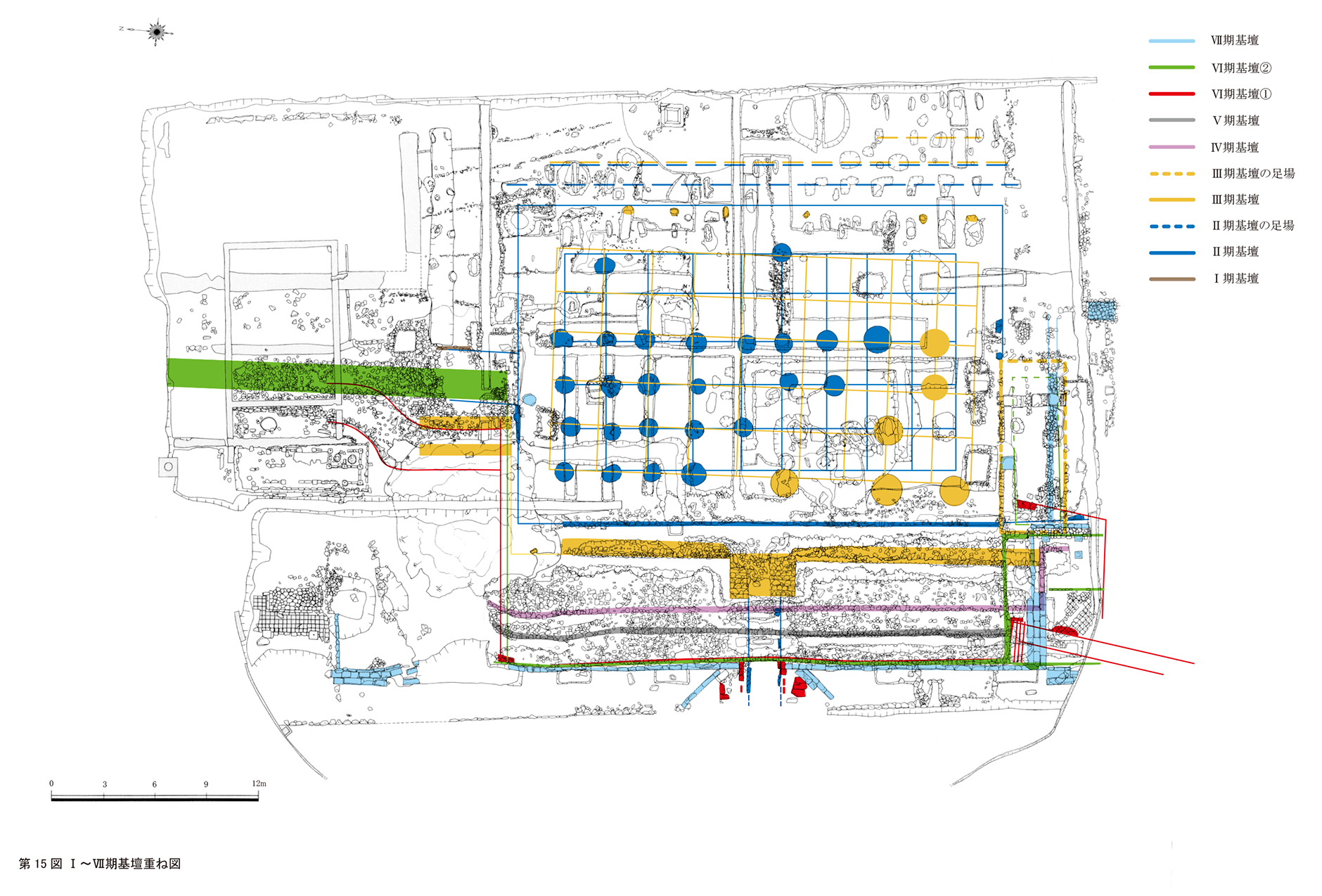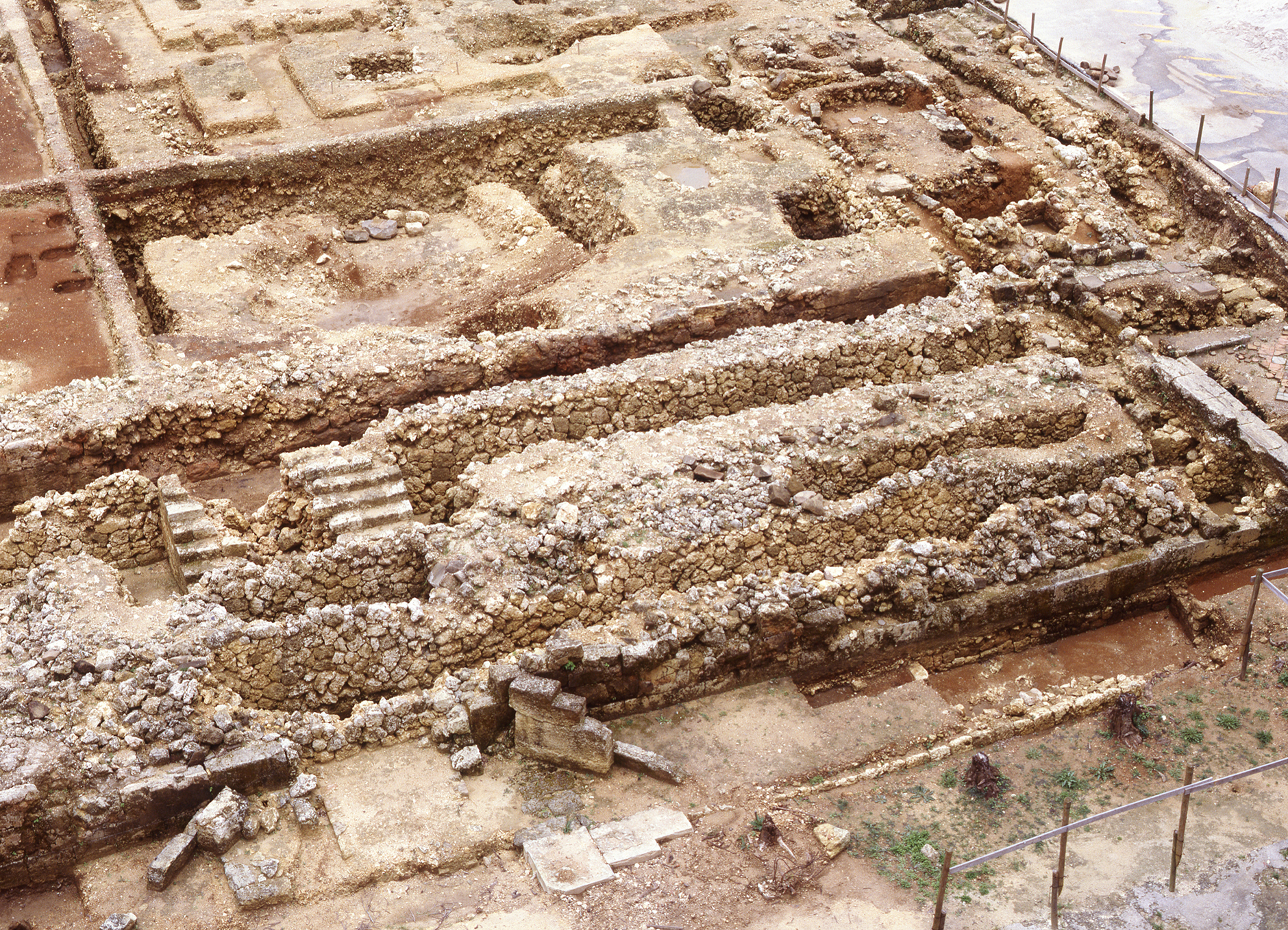Aiming to recreate the State Hall of the Ryukyu Kingdom |
| In 1986, the Shuri-jô State Hall Basic Design Committee, established by the Okinawa Development Agency, decided on a policy stating, "The State Hall had undergone various changes in form and scale from the time of its foundation until it was destroyed in the Battle of Okinawa. In principle, the State Hall should be reconstructed in the manner in which it was rebuilt in 1712 and designated as a national treasure in 1925, by fully examining related materials.” Then, archaeological excavation and studies of literature were pursued and based on the outputs. Following this, a reconstruction plan was formulated and further academic verification was added by the Shuri-jô State Hall Design Committee. |
Archaeological Research on the Shuri-jô Ruins State Hall Area Area: |
 Figure on foundations of period I-VII "Report on Archaeological Survey of the State Hall Area of Shuri-jô ruin © page23 (Okinawa Prefectural Archaeological Center; March 2016)  Remains of the platform showing the expansion of the main hall © Okinawa Prefectural Archaeological Center |
The archaeological excavation of the State Hall area was conducted for two years from 1985. From the following year to 1991, materials were organized and a report was prepared. The excavation confirmed the exact location of the State Hall and the ground level. The six rows of stone foundations unearthed on the west side of the State Hall confirm the history of burning and reconstruction, which had been known only through descriptions in ancient documents. An attempt was made to identify the age of each foundation by observing the unearthed remains and dating of the artifacts excavated around them, as well as by examining the records of major restorations and the descriptions in documents describing the size of the State Hall. However, even among researchers, there are different opinions regarding the age of each foundation. The excavated building materials also provided information for the reconstruction. For example, the types of tiles categorized in the Yamato or Ming dynasty style excavated around the foundation built at different times, and the existence of a foundation with no tiles excavated were examined to understand chronological changes in the roofing materials of the State Hall. Also, stone products excavated such as railings and plinths were used as references for the reproduction of carvings. In addition, a wide variety of other excavated artifacts originated from China, Thailand, Vietnam, Korea, Japan, and different areas of Okinawa, including ceramics, bricks, coins, smoking pipes, jade, disks, metals (including bell fragments, furniture and building components, weapons, iron nails, etc.), bones, clay, glassware, and animal remains tell us about the rituals and life in the royal palace. |
Collection and Research of Related Materials: |
When the design plans for the reconstruction of Shuri-jô Castle were started, the only confirmed documents were the floor plans, elevations, and cross-sectional drawings of the State Hall. Those documents were prepared during the restoration of the Worship Hall of Okinawa Shrine in the 1930s, and were archived by the Agency for Cultural Affairs. Materials indicating how the State Hall was used as a royal government facility, showing room partitions, inside work and colors, were lacking. Some 100 years after the Ryukyu Disposition, memories of the Ryukyu era had been severed. Many valuable documents were lost in the Battle of Okinawa and the Tokyo Air Raid. However, through a series of coincidences, the Sunpoki was discovered among research materials that had recently been donated by Kamakura Yoshitaro to the Prefecture University of Arts. Later, the “Sho Family Documents”, which had been kept in strict custody by the Sho family in Tokyo, were obtained. Higashionna Kanjun, as chief editor of the biography of the last king of the Ryukyu, Sho Tai, had some of the royal family's documents transported from Nakagusuku Palace in Okinawa to Tokyo residence in 1910. Thus, the “Sho Family Documents” escaped damage in the war. Other royal records and documents that had been confiscated by the Meiji government during the Ryukyu Disposition, were lost in the Great Kanto Earthquake. Those that remained in Nakagusuku Palace were lost in the Battle of Okinawa. The two kinds of documents recovered contain detailed records of the State Hall’s major restoration in 1768 and 1846 respectively. Furthermore, various other old documents were analysed, photographs were collected, and other detailed information was gathered. To obtain precise clues as to the colors, painting and carving patterns, and techniques of the detailed designs indicated in these documents, surveys were conducted of shrines and temples in Kagoshima and Kyoto, as well as of buildings in Fuzhou, Quanzhou and Beijing in China, and in Korea. In addition, elderly people in Shuri were interviewed to gather more information, and the colors of the roof and exterior were carefully determined after examining all the data. |
Establishment of the Shuri-jô State Hall Design Committee: |
In 1986, the Shuri-jô State Hall Design Committee was established with the aim of reconstructing the State Hall based on academically verified data. Experts in architecture, history, archaeology, sculpture, and landscaping were brought together for this purpose. The committee was scheduled to meet three times a year to determine principles, policies, technical studies, design plans, and specifications for each stage of basic design, preliminary design, and implementation design. The committee members were Miyoshi Katsuhiko (Director, Park Foundation), Inagaki Eizo (Professor, Meiji University), Kaneta Kiyoshi (Professor, Kyoto University), Suzuki Kakichi (Director, Nara National Research Institute for Cultural Properties), Takara Kurayoshi (Director, Urasoe City Library), Takemoto Masahide (President, Okinawa Archaeological Society), Nishimura Sadao (Professor, University of the Ryukyus), Hirano Kanzo (Professor, Tokyo University of Agriculture), and Matayoshi Shinzo (Chairperson, Okinawa Prefectural Council for the Protection of Cultural Properties). Four specialized subcommittees were established to study specific technical issues. The four subcommittees and their chairpersons were as follows: Wooden Subcommittee, chaired by Suzuki Kakichi (mentioned above); Tile Subcommittee, chaired by Ihara Keiji (Director, Restoration Techniques Section, Tokyo National Research Institute for Cultural Properties); Color Subcommittee, chaired by Inagaki Eizo (mentioned above); and Sculpture Subcommittee, chaired by Tanabe Saburo (Professor, Musashino Art University). |

